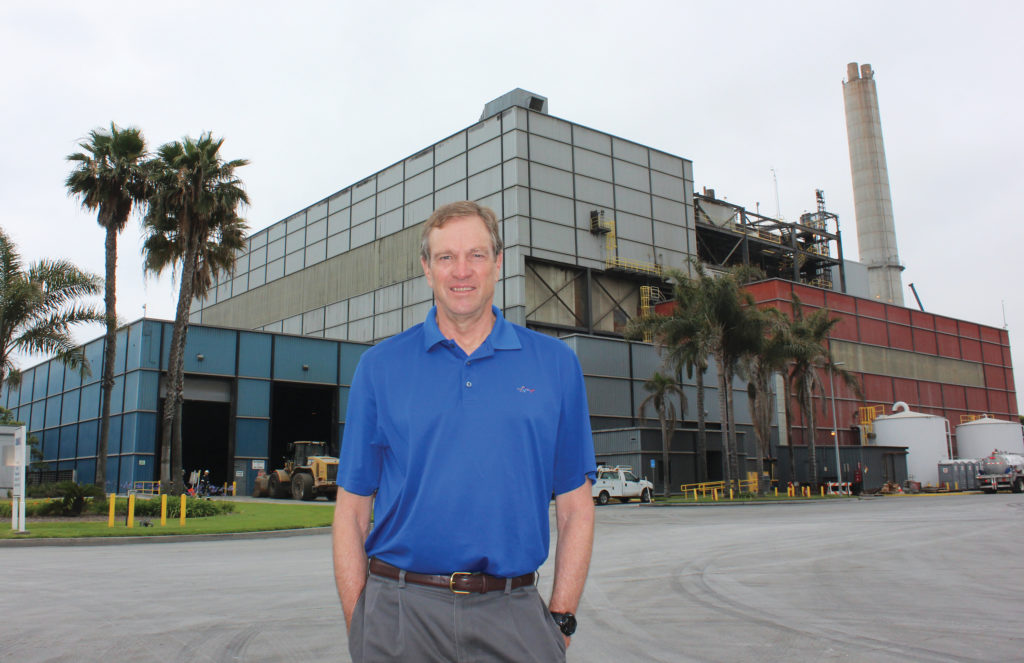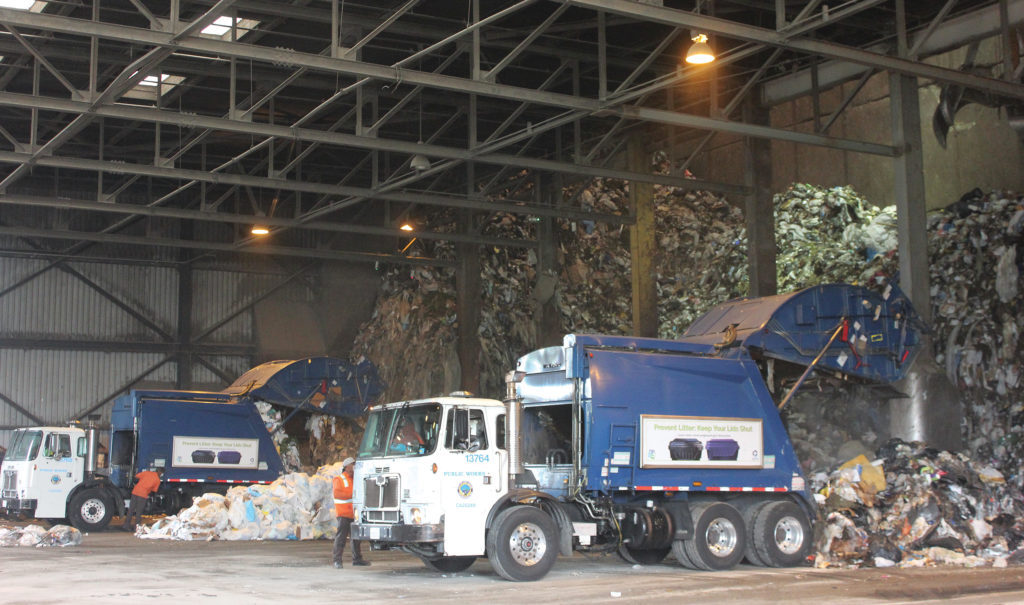In the industrial landscape of the San Pedro Bay ports, with cargo trucks whizzing by, the Southeast Resource Recovery Facility (SERRF) hardly stands out. But behind the gray metal facade of the Terminal Island structure, 1,380 tons of municipal waste are turned into power every day. Now, over 30 years after SERRF first started operations in July 1988, key parts of the power production plant are undergoing a $13.7 million renovation.
“It’s been maintained fine, but after so long, it’s like a car: you have to go in and replace major pieces of equipment,” Charlie Tripp, manager of the facility, told the Business Journal. SERRF was initially designed to run until December 2018, when the bonds for its construction had been paid off and a long-term power purchasing contract with Southern California Edison ran out.
Rather than retire the facility, the City of Long Beach and SERRF operator Covanta Energy decided to rejuvenate it. “For the last five years, we had been looking at other options: was there a technology out there that we could replace SERRF with? And we really couldn’t find anything,” Tripp said. “The fact is that this technology, as long as it’s maintained – and we have added additional pollution control equipment over the years as regulations changed – was still viable.”

The concept of turning waste into energy through combustion originated in Europe. “In Europe, they’ve been burning trash for over a hundred years, primarily because they didn’t have fossil fuels,” Tripp explained. “Most of the waste in Europe isn’t landfilled, it’s actually burned.” In California, energy had traditionally been produced using hydropower technology or fossil fuels, according to Tripp. But gas and oil crises in the 1970s and 1980s lead to legislation that promoted the diversification of the country’s power sources, giving way to more alternative energy production. SERRF was one of over 100 alternative power plants across the nation to be built during that time, Tripp noted.
Inside the facility, trash from black bins collected by waste-hauling companies is burned in combustors. The heat created by the burning waste is used to boil water, creating steam pressure, which transmits the power through a turbine. “If you blow onto a pinwheel, it spins. Same thing happens when you inject steam into this turbine, it spins, and the back of the turbine is attached to a generator,” Tripp explained. “The generator is what gives us power and pumps the power to your home, my home, everyone’s.”

In 2017, a consulting firm was brought in to study the feasibility and cost of continuing the power plant’s operations until at least 2044. The estimated cost of $13.7 million will be jointly covered by Covanta Energy and the city’s SERRF fund, contributing $5 million and $8.7 million, respectively. The city’s contributions will not come from funds previously dedicated to other city programs, Tripp noted, adding that over the three decades of its existence, SERRF has contributed $70 million in revenues to the city’s General Fund rather than received support from city coffers.
“The facility has been a real success, from a taxpayer standpoint, a money standpoint. And also for Long Beach, [which is] taking responsibility for the trash we create as a community, not shipping it somewhere else, to a distant landfill or something like that,” Tripp said. In its effort toward zero waste, the city is still in need of landfill alternatives like SERRF, he noted.
The four-year renovation program is scheduled to be completed in 2020, and all major parts of the power production process will be updated, one portion at a time, Tripp explained. “It’s a lot of work, a lot of planning is going into it, and then you try and do it so it doesn’t interrupt our customers,” he said. “Except for this one month right now, we’ve been able to continue to do the equipment updates and not interrupt many of our customers.” If there’s money left over, Tripp said, they might even give the work areas a new paint job. “Shine it up a little,” he said, smiling.
